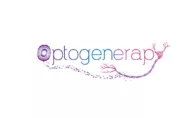OPTOGENETIC PROTEIN THERAPY FOR MULTIPLE SCLEROSIS
(Optogenetyczna terapia białkowa do leczenia stwardnienia rozsianego)
H2020-NMBP-2016-720694-2
2017-2020
Optogenerapy proposes a new interferon-ß (IFN-ß) drug delivery system to revolutionize Multiple Sclerosis treatment. The aim is to develop and validate a new cell-chamber device to be implanted subcutaneously providing a steady drug release during at least 6 months. The cell confinement within a chamber sealed by a membrane for safe drug release will overcome the adverse effects of current cellular therapies. Wireless powered optogenetics – light controlling cellular response of genetically engineered cells – is used to control the production of IFN-ß.
Replacing standard intravenous IFN-ß delivery by subcutaneous delivery prevents short and long term side effects and efficiency-losses related to drug peaks and discontinuation, while saving non-adherence costs. It is a low-cost system enabling large scale manufacturing combining:
- polymeric biomaterials with strong optical, biocompatibility, barrier requirements and sterilizability, to build the cell chamber and to encapsulate the optoelectronics;
- optoelectronics miniaturization, autonomy and optical performance;
- optimal cellular engineering design, enhanced by computer modelling, for stability and performance of the synthetic optogenetic gene pathway over long-term implantation;
- micro moulding enabling optoelectronics and membrane embedding for safety and minimal invasiveness.
The innovation potential is so huge that a proof-of-concept was listed by Scientist Magazine as one of the 2014’s big advances in science.
In our top-class consortium led by Eurecat (Barcelona), industrial pull meets technological push, ensuring that the preclinically validated prototype obtained at the end responds to market demands.
Non-industrial partners, including TUL (Poland), will benefit on developing their own expertise in specific field of biomaterials and cell therapy while cooperating with companies and producing in high quality publications, to increase their competitiveness among service providers and enhance quality of teaching.
TUL is responsible mainly for selection and validation of the best sterilization method for the optogenetic implant and for proving biocompatibility in order to guarantee implant safety for the patient.
The consortium:
- Eurecat (ES)
- ETH-Zurich (CH)
- Boston Scientific (IR)
- ASE – TWOptics Systems Design (ES)
- TUL – Politechnika Lodzka (PL)
- geneXplain (DE)
- INSERM (FR)
- Neos Surgery (ES)
- Ultrasion (ES)
- Erasmus (NL)
- UNE (ES)
Website: https://optogenerapy.eu/
